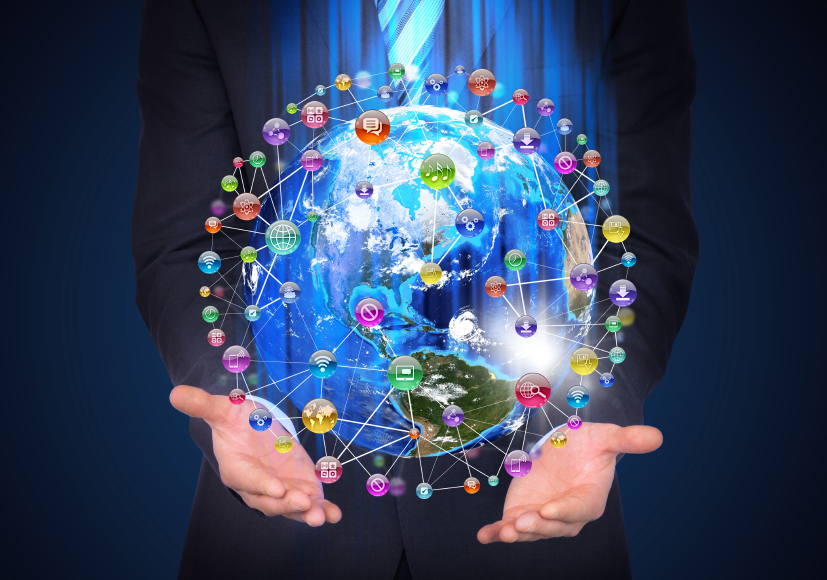
Connected World
Connecting people, objects, and systems online, exchanging and engaging with data across a variety of industries and domains that includes healthcare, manufacturing, transportation, energy, agriculture, retail, smart cities, construction, infrastructure, and security is at the heart of Connected World.
Future – Connected World:
There needs a Great Reset to recognize the structural difficulties that confront and establish solutions for a more resilient, equitable, sustainable, and connected society in the face of political and social turmoil, declining trust, and global instability. The Project Future of the Connected World is one modest step toward realizing this vision.
The State of the Connected World Report and the Global Action Plan are the two components of this effort. The objective, as well as the approach to track progress, are outlined. The roadmap highlights the main internet of things obstacles and opportunities, and the global action plan, that pulls together world-leading projects to help overcome these challenges, realize IoT’s potential, and create a connected world that benefits everyone.
A connected world more than IoT:
IoT solutions provide several competitive benefits and serve as a platform for the implementation of other technologies and approaches. However, simply connecting devices is insufficient to get the benefits of IoT. The goal is to integrate the solutions into the organization’s overall strategy and to digitize existing processes to build and feed the data platform, which will pave the way for future Data based services.
No matter what industry they are in, businesses can no longer ignore digital transformation. It gives businesses the tools, information, and opportunities they need to improve their operations, runs their devices more efficiently, generates new revenue streams, succeeds with innovative business models, and provides extra value to their customers. No matter what industry they are in, businesses can no longer ignore digital transformation. It gives businesses the tools, information, and opportunities they need to improve their operations, runs their devices more efficiently, generates new revenue streams, succeeds with innovative business models, and provides extra value to their consumers.
Internet of Things (IoT) solutions offer numerous competitive benefits in both B2B and B2Cindustries, and they serve as the foundation for the application of other technologies and processes. For example, industrial organizations utilize IoT to deploy a variety of applications, such as remote monitoring and servicing or predictive maintenance, and to create added value for themselves and their clients through creative services.
Business innovation of IoT
The main purpose of the Internet of Things is to link products, which entails adding new sensors and softwares to devices and connecting them to online via a connectivity module or a gateway. The data is then sent via several pathways before being centralized in a cloud. The usage of data received through IoT is the critical success factor here. As a result, the Internet of Things must be integrated into a larger digital strategy from the start, with clear goals and an interdisciplinary approach.
It’s not only about tying things together. Intelligent device connectivity is merely a means to an end. The goal must be to digitize existing processes to make quantum leaps in operational excellence, as well as to build and feed the data platform that will subsequently pave the way for more data-driven services. With the existing and now continuously obtained data, artificial intelligence approaches such as machine learning let users open up new aspects of corporate innovation. From the development of transparency to the automation of decisions to the blossoming of new business models, there will be unprecedented insights and opportunities.
Added value through connectivity:
An IoT solution’s value chain is made up of many technological pieces that are only partially equivalent in terms of conceptualization, required capabilities, and costs, but can only be fully successful when integrated. A potential strategy would be to carefully assess the needs, develop a long-term framework, and then implement particular capabilities. It’s also worth noting that these are multi-year initiatives with budgets in the low seven-figure range.
What’s crucial here is that IoT must be part of a solution that meets a true customer need while also being financially viable. As a result, considering the solution’s monetization is a critical component of every IoT project that, if overlooked, can lead to failure. The inclusion of a small pilot group, which is regularly polled and thus involved in the development of the services, has proven to be beneficial in determining the acceptance of the concepts as early as feasible. The Microsoft “Technology Adoption Program,” for example, allows selected customers and suppliers to utilize software from the development stage onwards and provide regular feedback. The next steps in using case-driven project development can then be created on this foundation. In this approach, a linked world can be built piece by piece, adding genuine value not only to the firm but also to its customers.
Why location matters in the era of the cloud:
Each device functions as a sensor, collecting information about its surroundings. When a gadget is connected, it can send any data we want to other devices. When properly contextualized, this creates a vast, limitless pool of data. The importance of location in the right context cannot be overstated. Consider how devices could communicate with one another by connecting to a single network, similar to how currently connect to a network with a single device. Vehicles, homes, cities, and people then transforms into Smart Vehicles, Smart Homes, Smart Cities, and frankly, Smarter People when connected to a live, breathing, communicating network.
The Internet of Things (IoT) will provide an unequaled opportunity for spatial analysis in the far-off but foreseeable future when gadgets, data, and humans are continually connected. Unfortunately, most current analytical methods are manual and time-consuming. Every day, for example, you get ready to go to work. You take up a long list of responsibilities before departing. Examine the weather and traffic conditions. Make the necessary adjustments to the thermostat. Switch the lights on and off. Set the timer for the alarm. Close the door and lock it. Perhaps you go for a walk with your dog. But did you remember to check the fridge after work to see if the milk needed to be replaced? You may not have to be concerned in a linked world.
Some of the examples like your smartphone can tell you where you work and where you have meetings. It can check the weather and keep track of what’s going on in the world. Your phone alerts you about a motorway accident and recommends you to leave 15 minutes early. As you leave, it advises you to bring a coat and an umbrella due to the impending storm. Thanks to geofencing, or a virtual perimeter, your Smart House detects your departure as you pull out of the driveway. It also knows you neglected to turn out the lights, set the alarm, and lock the door—7despite the fact that no one else is present. As a result, it takes care of important aspects for you.
Your last meeting was canceled by the afternoon. As a result, you leave work early. Your Smart Home is notified when you’ve left your geofence at work. It checks and sends a notification on your phone to remind you to get the necessary items. You’re directed to the nearest store by your phone. When you leave the store’s geofence, your home detects that you’re approaching. As a result, the lights are turned on and the thermostat is reset.
Evolution in connectivity beyond the 5G revolution: connected world
With the first true high-band 5G networks operational, they set out to get a realistic picture of how and where connectivity could be delivered in the next ten years, as well as what it could enable. However, 5G does not appear in isolation
Digital connectivity means for the coming decade:
This study looks at how a connection could be used in mobility, healthcare, industry, and retail to show what’s possible. These four commercial categories alone might enhance global GDP by $1.2 trillion to $2 trillion by 2030, according to the use cases that are discovered. This means that the stakes will eventually rise to trillions of dollars across the whole global economy.
The majority of this value can be obtained with improved connectivity, which can be done with technologies that have been around for a while. This leads to the question: why is there still so much potential untapped, and will new technologies alone be sufficient to realize it? This study looks at the issues that are holding the market back and what it will take to get it moving again.
Connectivity has ramifications for equity and society in addition to its industrial effects. Over and above the economic value of the use cases found in the four commercial categories highlighted, enabling more individuals to connect to global process flows of information, and services that could add $2 trillion to GDP. Even though gaps will persist, the trend has the aspects to unlock greater human potential and prosperity in many countries.
